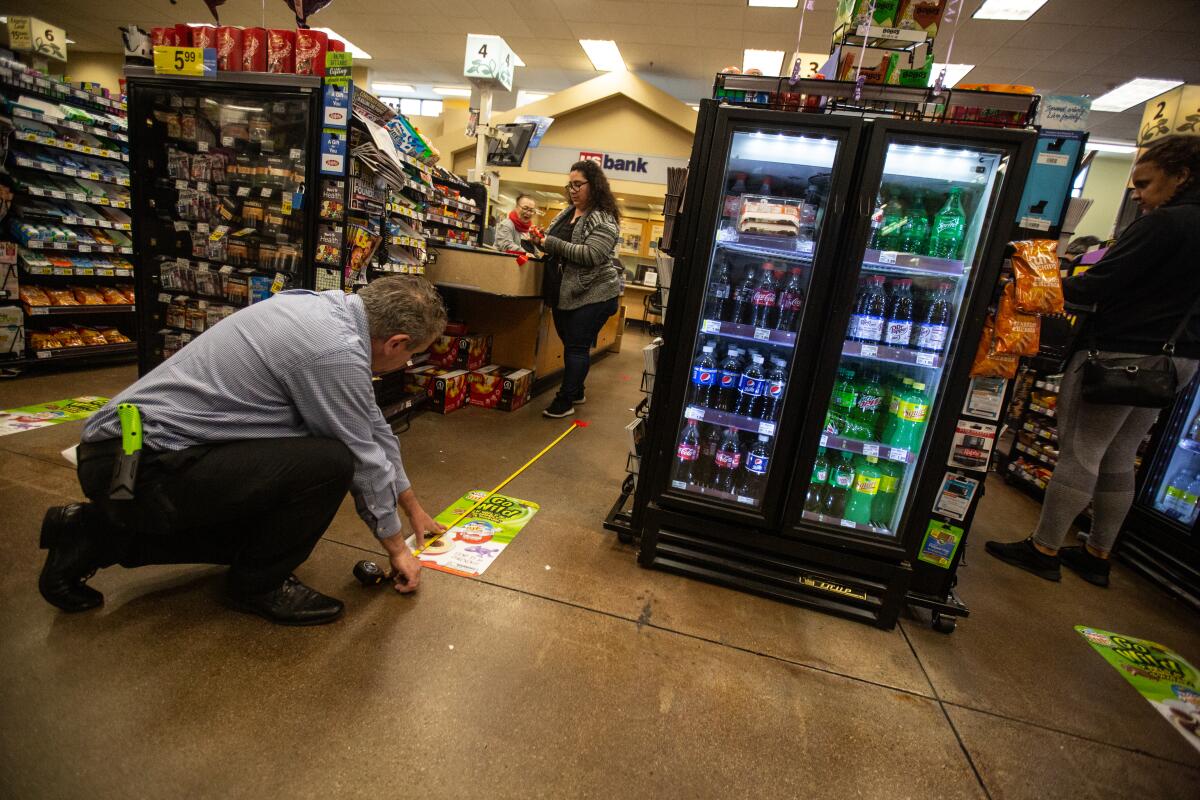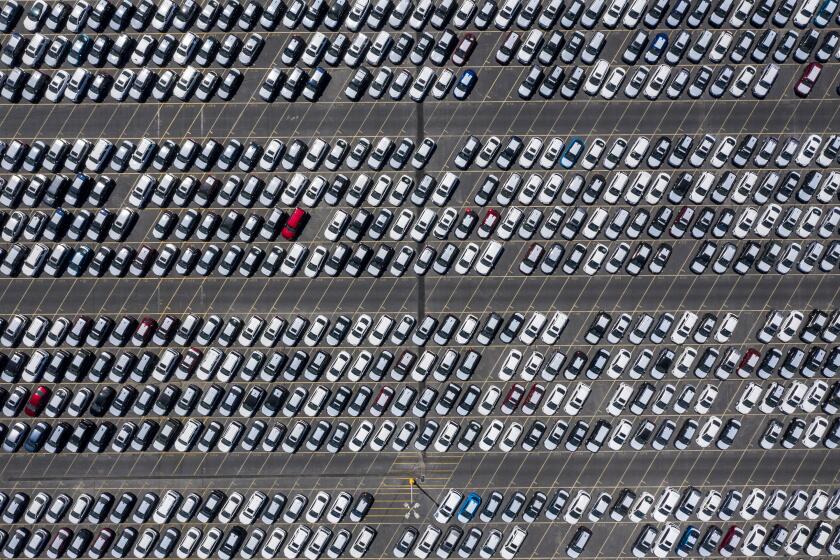Grocery prices are soaring. Here’s why

- Share via
The higher prices that food makers have been warning about for months have hit U.S. grocery carts.
Seafood prices are up 18.7%, on average, in the 13-week period that ended April 24, while baked goods such as doughnuts and rolls cost about 7.5% more than in the same period last year, new data from NielsenIQ show. In fact, 50 of the 52 categories tracked by the data provider are more expensive than a year ago, with only butter and milk holding essentially flat while everything around them skyrockets.
Rising commodity costs are partially behind the surging prices, with the Bloomberg Commodity Spot Index — which tracks 23 raw materials — now at its highest level in almost a decade. Surging transport costs and supply chain disruptions are contributing, too, as is a continued bump in consumer demand as more Americans cook at home.
“Everyone is looking to offset higher transportation costs, higher labor costs and higher input costs. And that flows through the whole chain all the way to the consumer,” said Bloomberg Intelligence analyst Jennifer Bartashus. “Inflation expectations for 2021 are much higher than they’ve been in recent years.”
A unique set of circumstances brought on by the pandemic has roiled the used car market, leading to an inventory shortage that has sent prices soaring.
With demand so elevated during the pandemic, grocers have not had to discount as many items as they normally would have, said the chief executive of Albertsons Cos., which operates 2,277 supermarkets including chains such as Safeway and Vons.
“When there’s a shortage in supply, it makes no sense to promote aggressively,” Vivek Sankaran said in an interview last month. “That’s why you see inflation in some categories. It just makes no sense to play with price at this point.”
These higher food prices come at a time when U.S. gasoline prices are also rising, pinching consumers.
“It has the prospects of being tough and getting tougher as the year progresses. There is some residual stimulus out there, but as that is used up or has been saved, it will increase the pressure on consumers in terms of just their regular budget,” Bartashus said.
Food inflation is also hitting restaurant chains. At Dine Brands Global Inc., the parent company of Applebee’s and IHOP, packaging, pork and pancake mix prices are the big areas where prices are rising, CEO John Peyton said in an interview Wednesday. Chicken prices are also rising, with companies reporting surging demand and occasional outages as the poultry supply runs low.
So far, Dine Brands hasn’t raised national menu prices, but it could happen later this year and franchisees can always elect to raise their own prices. “Commodity and labor costs have got upward pressure on them right now,” Peyton said.
For TGI Friday’s Inc., its pork prices that have been the biggest issue lately.
“Pork has been our biggest priority, primarily getting the rib product and the bacon products that we need. We’ve seen an increase in cost. Fortunately we have the supply that we need, but it is more expensive,” CEO Ray Blanchette said. “There’s been some supply chain issues that we’re now paying for.
Bloomberg writer Matthew Boyle contributed to this report.
More to Read
Inside the business of entertainment
The Wide Shot brings you news, analysis and insights on everything from streaming wars to production — and what it all means for the future.
You may occasionally receive promotional content from the Los Angeles Times.











